| Bénin | Burkina Faso | Cabo Verde | Côte d’Ivoire | Gambia | Ghana | Guiné-Bissau | Guinée | Liberia | Mali | Mauritanie | Niger | Nigeria | Sénégal | Sierra Leone | Togo |
> Nigeria | Books | Articles |
 Also see / Voir aussi / Veja também “West Africa general – Books”
Also see / Voir aussi / Veja também “West Africa general – Books”
Adédèjì, Adewale:
Yoruba Culture and Its Influence on the Development of Modern Popular Music in Nigeria.
Ph.D. The University of Sheffield, 2010. 288 p.
Contents – PDF Download / Télécharger / Baixar 3.00 MB
Ademowo, Paul ‘Wale:
The History of Fuji Music in Nigeria.
Dugbe, Ibadan: Effective Publishers, 1993. 132 p.
Contents
Ademowo, Paul ‘Wale:
The History of Juju Music in Nigeria.
Dugbe, Ibadan: Effective Publishers, 1994. 155 p.
Contents
Ademowo, Paul ‘Wale:
The Highlife Years: History of Highlife in Nigeria.
Dugbe, Ibadan: Effective Publishers, 1995. xvi & 136 p.
Contents
Ademowo, Paul ‘Wale:
The King of Fuji Music. Dr. Waisu Ayinde Anifowoshe Marshal.
Dugbe, Ibadan: Effective Publishers, 1996. 120 p.
Contents
Adesokan, Z.:
Ebenezer Obey: A Popular Juju Artist.
B.A. University of Nigeria, Nsukka, 1985.
Ajayi, Tunji:
King Sunny Ade. The Legend!
Denver, Colo.: OutskirtsPress, 2009. 425 p.
Contents
Ajetunmobi, Rasheed; Babatunde Osiyale & Dele Sogbesan:
Haruna Ishola: The Life and Times of Baba Ngani Agba.
Ijagun, Ogun State: Tai Solarin University of Education Press, 2010. 110 p.
Ajibero, Matthew Idowo:
Yoruba Music on Gramophone Records:
A Comprehensive Annotated Discography of Chief Commander Ebenezer Obey’s Juju Music.
B.A. Ahmadu Bello University (Zaria), 1978. xxvii & 56 p.
Contents
Ajirire, Tosin & Wale Alabi:
King Sunny Ade. An Intimate Biography.
Lagos: Showbiz Publications, 1989. 96 p.
Contents
Ajirire, Tosin & Wale Alabi:
3 Decades of Nigerian Music 1960-1990.
Lagos: Limelight Showbiz Publication, 1992. 135 p.
Contents
Alaja-Browne, Afolabi:
Juju Music: A Study of its Social History and Style.
Ph.D. University of Pittsburgh, 1985. 187 p.
Contents
Allen, Tony with Michael E. Veal:
Tony Allen. An Autobiography of the Master Drummer of Afrobeat.
Durham, N.C.: Duke University Press, 2013. 199 p.
Contents
Azike, Tochukwu I.:
The Compilation of Bibliography on the Records of Oliver De Coque and His Ogene Sound Super of Africa.
Institute of Education, Library Service, Ahmadu Bello University (Zaria), 1992. 20 p.
Contents
Bender, Wolfgang:
Waka-Sakara-Apala-Fuji. Islamisch Beeinflusste Musik der Yoruba.
Kommentierte Kataloge zur afrikanischen Musik, Nr. 2.
Iwalewa, Universität Bayreuth, 1983. 23 p.
Bender, Wolfgang:
Der nigerianische Highlife.
Musik und Kunst in der populären Kultur der 50er und 60er Jahre.
Wuppertal: Edition Trickster im Peter Hammer Verlag, 2007. 572 p.
Inhalt
Bensignor, François:
Fela – le Génie de l’afrobeat.
Plogastel Saint-Germain: Editions Demi-Lune, 2012. 192 p.
Table des matières
Coker, ‘Niyi Jr.:
A Study of the Music and Social Criticism of African Musician Fela Anikulapo-Kuti.
Studies in the History and Interpretation of Music , Book 100. University of Michigan.
Lewiston, N.Y.: E. Mellen Press, 2004. xvi & 152 p.
Contents
Collins, E[dmund] J[ohn]:
My Life, by Sir Victor Uwaifo. The Black Knight of Music Fame.
Accra: Black Bell Publication, 1976. 46 p.
Contents
Collins, [Edmund] John:
Fela. Kalakuta Notes.
Amsterdam: KIT Publishers, 2009. 159 p.
Contents
2nd enlarged edition
Middletown, Conn.: Wesleyan University Press, 2015. xii & 326 p.
Contents – PDF Download / Télécharger / Baixar 8.96 MB
Damilola, Awala Oritsejolomi:
The Contemporary Nigerian Popular Music: A Study of the Hip-Hop Styles.
M.A. University of Lagos, 2008.
Depagne, Rinaldo & Marianne Maury Kaufmann (dir.):
Fela Kuti: le génial musicien du Nigeria.
Paris: Editions Cauris, 2004. 28 p.
ISBN 978-291-460-511-0
Emielu, Austin ‘Maro:
Nigerian Highlife Music.
Lagos: Centre for Black and African Arts and Civilization, 2013. xii & 252 p.
Contents
Fadipe, Israel Ayinla:
The Theme of Ethical Re-Orientation in Popular Music: The Case of Ayinla Omowura.
M.A. University of Ibadan, 2009.
Fairfax, Frank Thurmond:
Fela, the Afrobeat King: Popular Music and Cultural Revitalization in West Africa.
Ph.D. University of Michigan, 1993. ix & 466 p.
ProQuest no. 9409686
Idolor, Emurobome G.:
Ókpẹ Disco: A Neo-Traditional Nigeria Popular Music Genre.
Ph.D. University of Ibadan, 2001.
Idolor, Emuborome [G.] (ed.):
Music In Africa: Facts and Illusions.
Ibadan: Stirlin-Horden Publishers (Nig) Ltd., 2002.
Idowu, Mabinuori Kayode:
Fela: Why Blackman Carry Shit.
Ikeja: Opinion Media Limited, 1986. 186 p.
Version française
Fela « Why Blackman Carry Shit ».
Paris: Éditions Florent Massot, 1997. 157 p.
ISBN 978-2-908382-47-1
Idowu, Mabinuori Kayode:
Fela le combattant.
Bordeaux: Le Castor Astral, 2002. 141 p.
Table des matières
Edizione italiana
Fela Kuti. Lotta continua!
Roma: Stampa Alternativa, 2007. 109 p.
ISBN 978-88-7726-982-4
Idowu, Mabinuori Kayode:
Fela – Phenomenon & Legacy.
Paris: Black Art Production, 2012. 524 p.
Contents
Ige, Clement & Femi Abulude:
Hooked to Music. King Sunny Ade’s Own Story.
Ibadan: Distinct Publications, 1996. 101 p.
Contents
Ikonne, Uchenna:
Wake Up You! The Rise and Fall of Nigerian Rock, 1972-1977 Vol. 1
Now Again Records (Los Angeles, Calif.), CD & book, NA 5120, P2016. 104 p.
Ikonne, Uchenna:
Wake Up You! The Rise and Fall of Nigerian Rock, 1972-1977 Vol. 2
Now Again Records (Los Angeles, Calif.), CD & book, NA 5125, P2016. 98 p.
Ita, Chief Bassey:
Jazz in Nigeria. An Outline Cultural History.
Calabar & Lagos: Radical House Publication, 1984. 99 p.
Contents
Lawal, Olakunle A.:
Music as a Commentary on the Society:
The Life and Times of Chief (Dr.) Sikiru Ayinde “Barrister” Agbaje Balogun.
CBAAC Occasional Monographs, No. 26.
Lagos: Centre for Black and African Arts and Civilization, 2013. 30 p.
Leonard, Lynn:
The Growth of Entertainments of non-African Origin in Lagos from 1866-1920 (with Special Emphasis on Concert, Drama, and the Cinema).
M.A. University of Ibadan, 1967. 193 p.
Loko, Olugbenga Olanrewaju:
Growth and Challenges of Music Recording Industry in Nigeria, 1940-2000.
Ph.D. University of Ibadan, 2009.
Moore, Carlos:
Fela, Fela. This bitch of a life.
London: Allison & Busby, 1982. 287 p.
Contents
US reprint
Chicago, Ill.: Chicago Review Press, 2009 288 p.
ISBN 978-3942-989-34-3
Version française
Fela Fela, cette putain de vie.
Paris: Karthala, 1982. 305 p.
ISBN 978-2-86537-040-5
Edição em português
Fela. Esta vida puta.
Belo Horizonte, MG: Nandyala, 2011. 352 p.
ISBN 978-8561-19146-7
Ngoladi, Uzor:
Seun Kuti : Inside Kalakuta & Within Afrobeat.
Lagos: Strategia Blast International (Nigeria) Ltd., 2012. xiii & 202p.
Contents
Obey, Ebenezer in collaboration with Mike Awoyinfa:
The Legend’s Own Story.
Ibadan: Egret Books, 1992. ix & 156 p.
Ogisi, Arugba Aboyowa:
The Evolution of Popular Music in South-Western Nigeria, 1900-1990.
Ph.D. University of Ibadan, 2009.
Ogunbowale, Mopelolade Oreoluwa:
“In the Ghetto, Life No Easy For We”:
The Construction and Negotiation of Identity in Ajegunle Raga.
M.A. University of Guelph (Guelph, Ontario), 2012. x & 98 p.
Contents – PDF Download / Télécharger / Baixar 2.56 MB
Oikelome, Albert Oseghaede:
Styllistc Analysis of Afrobeat Music of Fela Anikulapo-Kuti.
Ph.D. University of Ibadan, 2009.
Ojo, Olasebikan:
Sakara Music as a Literary Form.
Senior honours thesis, University of Ibadan, 1978.
Okafor, Richard C.; Afam Nwokike; Cosmas Eziechi & Jonathan Egudu (eds.):
The Life and Works of Celestine Ukwu.
Enugu: New Generation Book, 1999. 158 p.
Contents
Okagbare, Benson Corporo:
Songs of I. K. Dairo, MBE and his Blue Spots (with Plates) with Commentaries in English.
Lagos: Published by the Author. Printed by Nigeria National Press, Apapa, 1969. ix & 134 p.
Contents
Okoro, Justice Chukwudi:
No Eclipse for the Star: The Music and Message of Sir Warrior.
Benin: Timeless Publishers, 2005.
Oladipo-Ola, Jawi:
Fela Anikulapo-Kuti. The Primary Man of an African Personality. The Narrative and Screenplay.
Osogbo: Frontpage Media, 2011. 130 p.
Contents
Olaniyan, Oluyemi:
The Evolution of the Technique of the Creativity of Fuji – A Nigerian Popular Music Genre.
Mongraph Series, Department of Music, Obafemi Awolowo University, Ile-Ife, 2004.
Olaniyan, Tejumola:
Arrest the Music! Fela and His Rebel Art and Music.
Bloomington, Ind.: Indiana University Press, 2004. 239 p.
Contents
Olatunji, Babatunde with Robert Atkinson:
The Beat of My Drum. An Autobiography.
Philadelphia, Pa.: Temple University Press, 2005. 247 p.
Contents
Olorunyomi, Olusola:
Afrobeat Song-text Narrative and the Poetics of Hypertext Performance.
Ph.D. University of Ibadan, 2005. xv & 250 p.
Olorunyomi, Sola:
Afrobeat! Fela and the Imagined Continent.
Trenton, N.J.: Africa World Press, 2003. 288 p.
Contents
Olusoji, Stephen Olu-Ibukun:
Comparative Analysis of the Islam-Influenced Waka, Apala, and Sakara Popular Music of the Yoruba
Ph.D. University of Ibadan, 2009.
Omojola, Bode:
Popular Music in Western Nigeria: Theme, Style and Patronage System.
Ibadan: Institut Français de Recherché en Afrique (IFRA Ibadan), 2006. 166p.
Reprint
Ibadan: Institut Français de Recherché en Afrique (IFRA Nigeria), 2014. 166 p.
Contents
Omojola, Bode:
Yorùbá Music in the Twentieth Century. Identity, Agency, and Performance Practice.
Rochester, N.Y.: University of Rochester Press, 2012. 285 p. & CD
Contents
Onwuegbuna, Ikenna Emmanuel:
Trends in African Popular Music.
Socio-Cultural Interactions and the Reggae Genre in Nigeria.
Bloomington, Ind.: Xlibris, 2015. 132 p.
Contents
Opesanwo, Gbenga & Segun Ogunkoya:
I. K. Dairo M.B.E.: The Man, the Myth and the Blue Spots.
Abeokuta: Kunle Alayande Printing and Publishing Co., 1992. xii & 140 p.
Contents
Oreoluwa, Kuponiyi Aderiyike:
Code-Switching in Contemporary Nigerian Hip Hop Songs.
M.A. University of Ghana (Legon), 2013 vi & 95 p.
Contents – PDF Download / Télécharger / Baixar 0.98 MB
Schoonmaker, Trevor:
Fela. From West Africa to West Broadway.
New York, N.Y.: Palgrave Macmillan, 2003. 212 p.
Reprint
Houghton, South Africa: Jacana Media, 2004. 212 p.
Contents
Servant, Jean-Christophe:
“Which way Nigeria?” Music under Threat:
A Question of Money, Morality, Self-Censorship and Sharia.
Copenhagen: Freemuse, 2003. 88p.
Contents – PDF Download / Télécharger / Baixar 964 KB
Stephanakis, Alexandra:
Fela le souffle noir.
Marseille: Editions Altinéa, 2001. 192 p.
ISBN 978-2-9098-2885-5
Thomas, T. Ajayi:
History of Juju Music. A History of a Popular Music from Nigeria.
Jamaica, N.Y.: Thomas Organization, 1992.
170 p. & VHS video, 3 audio cassettes or CDs
Contents
Timothy-Asobele, Samuel (Ola)jide:
Historical Trends of Nigerian Indigenous and Contemporary Music.
Isolo-Lagos: Rothmed International Limited, 2002. ix & 144 p.
Contents
Veal, Michael E.:
Fela. The Life and Times of an African Musical Icon.
Philadelphia, Pa.: Temple University Press, 2000. 313 p.
Contents
Waterman, Christopher Allen:
Juju: The Historical Development, Socioeconomic Organization
and Communicative Funktions of a West African Popular Music.
Ph.D. University of Illinois at Urbana-Champaign, 1986. 447 p.
Contents
Waterman, Christopher A[llen]:
Jùjú: A Social History and Ethnography of an African popular Music.
Chicago, Ill.: University of Chicago Press, 1990. 277 p. & audio cassette
Contents
Page created 16/07/2017 © afrobib.com – latest update 15/08/2019

 CONTENTS
CONTENTS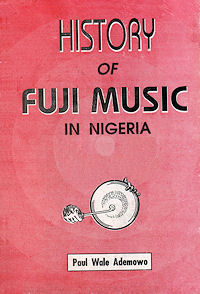 CONTENTS
CONTENTS CONTENTS
CONTENTS CONTENTS
CONTENTS CONTENTS
CONTENTS CONTENTS
CONTENTS CONTENTS
CONTENTS CONTENTS
CONTENTS CONTENTS
CONTENTS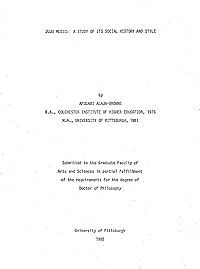 CONTENTS
CONTENTS CONTENTS
CONTENTS CONTENTS
CONTENTS INHALT
INHALT TABLE DES MATIÈRES
TABLE DES MATIÈRES CONTENTS
CONTENTS CONTENTS
CONTENTS CONTENTS
CONTENTS CONTENTS
CONTENTS CONTENTS
CONTENTS TABLE DES MATIÈRES
TABLE DES MATIÈRES CONTENTS
CONTENTS CONTENTS
CONTENTS CONTENTS
CONTENTS CONTENTS
CONTENTS CONTENTS
CONTENTS CONTENTS
CONTENTS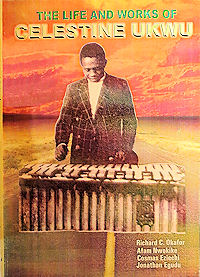 CONTENTS
CONTENTS CONTENTS
CONTENTS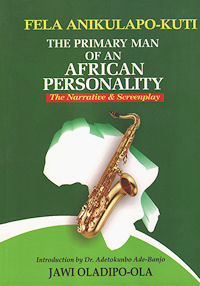 CONTENTS
CONTENTS CONTENTS
CONTENTS CONTENTS
CONTENTS CONTENTS
CONTENTS

 CONTENTS
CONTENTS CONTENTS
CONTENTS CONTENTS
CONTENTS CONTENTS
CONTENTS CONTENTS
CONTENTS CONTENTS
CONTENTS



 CONTENTS
CONTENTS CONTENTS
CONTENTS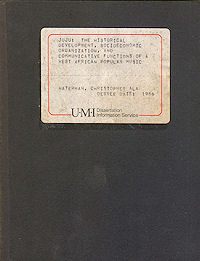 CONTENTS
CONTENTS CONTENTS
CONTENTS

 CONTENTS
CONTENTS INHALT (Button Type)
INHALT (Button Type) CONTENTS
CONTENTS